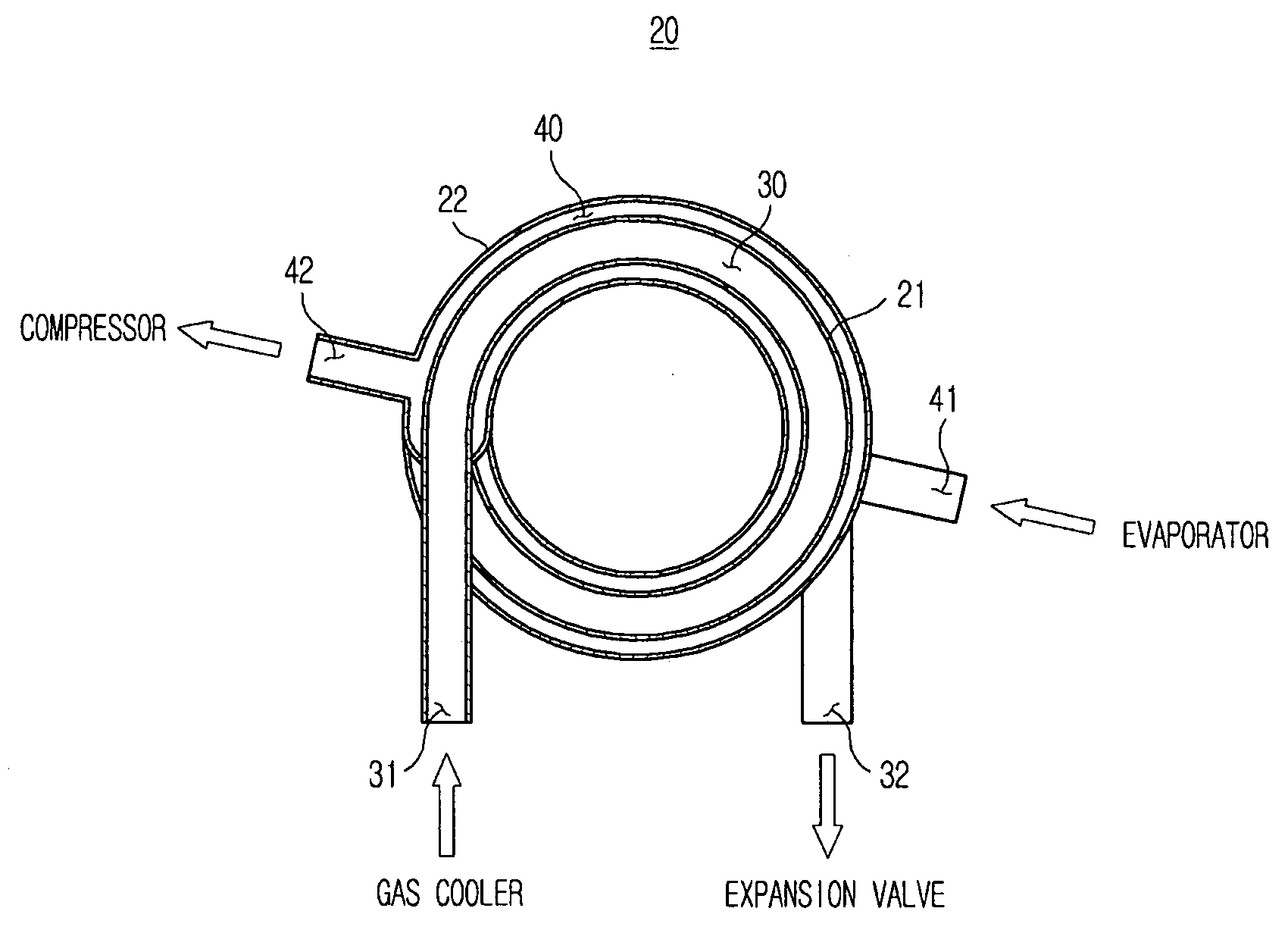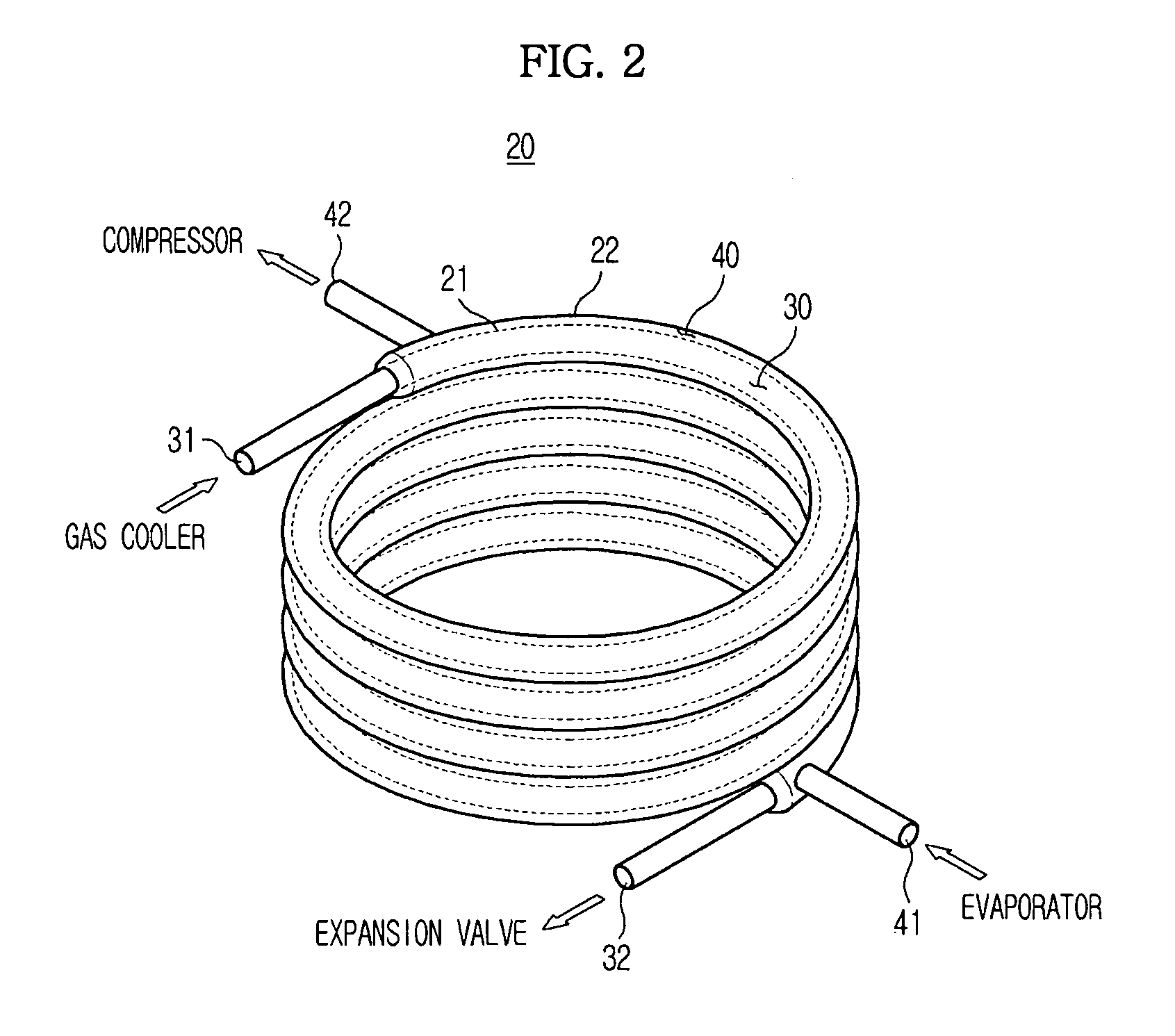Refrigerant cycle device
a cycle device and refrigerant technology, applied in the direction of refrigeration components, indirect heat exchangers, lighting and heating apparatus, etc., can solve the problems of increased charge of refrigerant, difficult handling of materials, and difficulty in using these compounds as refrigerants, and achieve the effect of reducing the pressure of refrigeran
- Summary
- Abstract
- Description
- Claims
- Application Information
AI Technical Summary
Benefits of technology
Problems solved by technology
Method used
Image
Examples
first embodiment
[0052]FIG. 1 is a refrigerant circuit diagram of a refrigerant cycle device in accordance with the present invention.
[0053]A refrigerant cycle device according to the embodiment of the present invention is used in an air conditioner, a refrigerator, a display case, or the like.
[0054]As shown in FIG. 1, a refrigerant cycle device 1 according to the first embodiment of the present invention is constituted such that a compressor 11, a gas cooler 12, an expansion valve 13 (pressure reducing device), and an evaporator 14 are connected to each other in a closed loop.
[0055]The compressor 11 is provided between the gas cooler 12 and the evaporator 14. The compressor 11 compresses a gas refrigerant of a low temperature and a low pressure into a gas refrigerant of a high temperature and a high pressure. Various types of compressors, such as a hermetic reciprocating compressor, a rotary compressor, a scroll compressor or the like, can be used.
[0056]An inlet of the gas cooler 12 is connected wi...
second embodiment
[0093]Hereinafter, a refrigerant cycle device according to the present invention will be described.
[0094]The same elements as the first embodiment are denoted by the same reference numerals, and a detailed explanation thereof is omitted.
[0095]FIG. 5 is a schematic perspective view illustrating a connecting structure of a heat exchanger and an evaporator in a refrigerant cycle device according to a second embodiment of the present invention.
[0096]A heat exchanger of the refrigerant cycle device according to the second embodiment is generally the same as the heat exchanger of the refrigerant cycle device according to the first embodiment.
[0097]However, the evaporator 14 and the heat exchanger 20 are arranged such that the outlet of the evaporator 14 is provided at a higher position than the inlet 41 of the second passage 40 of the heat exchanger 20. Specifically, the evaporator 14 and the heat exchanger 20 are arranged such that the outlet of the evaporator 14 is positioned at the sub...
third embodiment
[0100]Hereinafter, a refrigerant cycle device according to the present invention will be described.
[0101]The same elements as the second embodiment are denoted by the same reference numerals, and the detailed explanation thereof is omitted.
[0102]FIG. 6 is a schematic perspective view illustrating a connecting structure of a heat exchanger and an evaporator in a refrigerant cycle device according to a third embodiment of the present invention, and FIG. 7 is a schematic sectional view of the heat exchanger shown in FIG. 6.
[0103]As shown in FIGS. 6 and 7, a heat exchanger 50 of this embodiment is formed in a double pipe type, and has a substantially rectangular helical structure. In order for the heat exchanger 50 to have a rectangular helical structure, the heat exchanger 50 is formed with bent portions 53 which are bent with a predetermined interval therebetween.
[0104]By the above configuration of bending the heat exchanger 50, double pipe type first and second refrigerant pipes 51 a...
PUM
 Login to View More
Login to View More Abstract
Description
Claims
Application Information
 Login to View More
Login to View More - R&D
- Intellectual Property
- Life Sciences
- Materials
- Tech Scout
- Unparalleled Data Quality
- Higher Quality Content
- 60% Fewer Hallucinations
Browse by: Latest US Patents, China's latest patents, Technical Efficacy Thesaurus, Application Domain, Technology Topic, Popular Technical Reports.
© 2025 PatSnap. All rights reserved.Legal|Privacy policy|Modern Slavery Act Transparency Statement|Sitemap|About US| Contact US: help@patsnap.com



